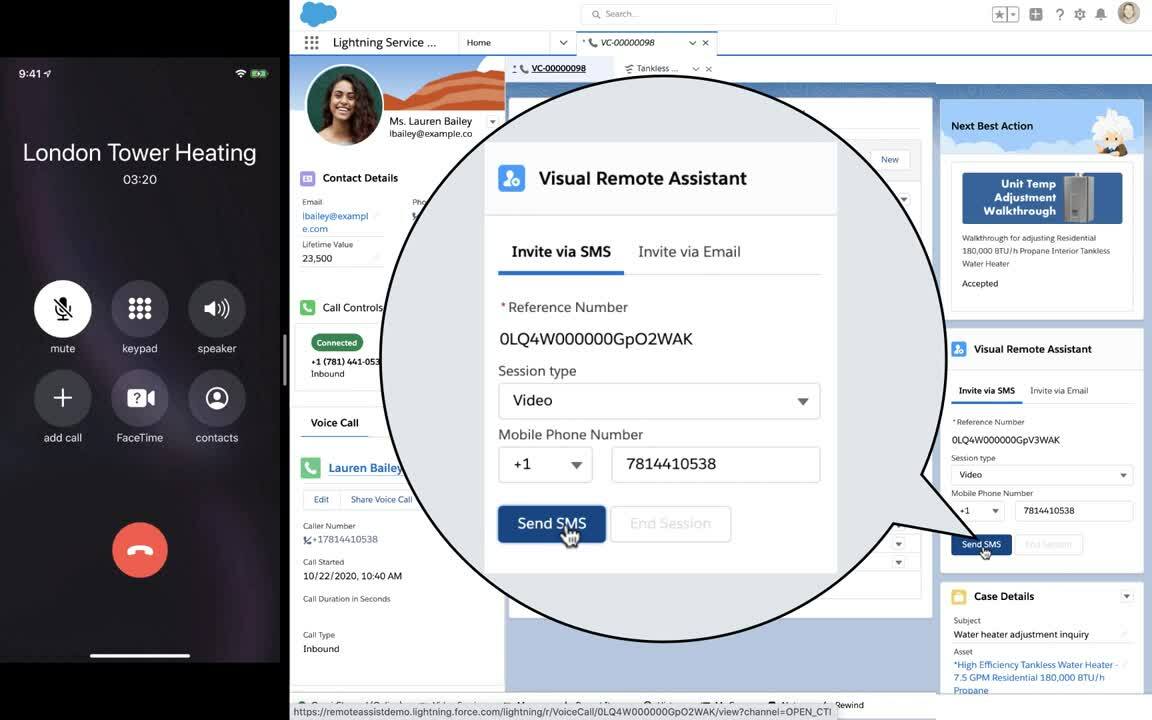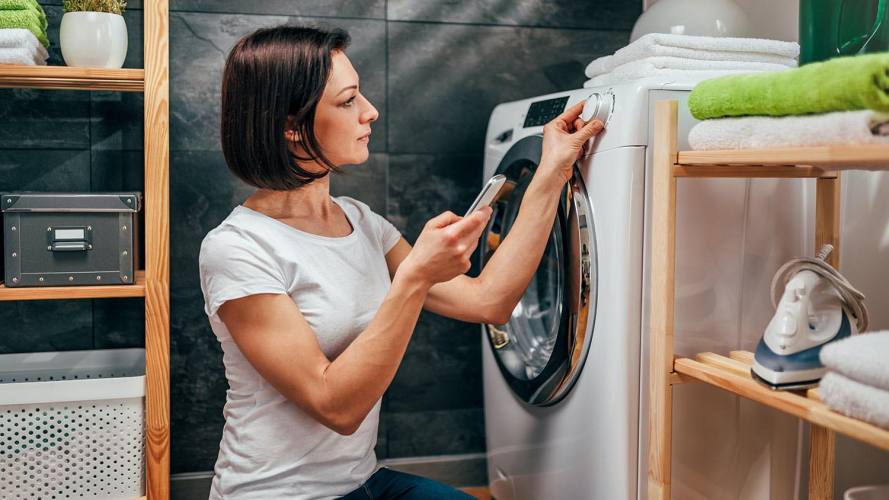No matter what’s happening in the world, people still need service. Internet connections still go down, homes still need refrigerators, and washing machines still require maintenance. Your customers still want efficient and complete service the first time.
What has changed today is how they may feel about in-person service. Even with safety requirements in place, some customers may be hesitant about having frontline service workers on site. Businesses are also concerned for employee safety and well-being.
Along with best practices, the right field service management mitigates today’s safety concerns surrounding in-person service. That’s where visual remote assistance comes in to help your customers get efficient service, while prioritizing safety and enhancing both customer and employee experience.
Support customer safety with remote support software
Provide visual customer assistance with remote support software to enable service or support from anywhere, anytime — without physical contact or high bandwidth connections. Remote support lets your contact center agents and frontline service workers solve a customer’s problem through virtual real-time, guided interaction. It also allows experts to help frontline service workers resolve issues.
With advanced remote support software, a contact center agent or frontline service worker sees a customer’s physical environment in real time through their smart device. They can guide customers using augmented reality (AR), which displays on-screen graphical information over the object that needs service. They provide targeted, step-by-step directions with annotations on their mobile screen to resolve many issues. And at the completion of the job, the service business has a visual record for future reference.
Depending on the service request, visual remote assistance can be used to solve customer problems on its own or in combination with in-person service as a hybrid approach.
Here are three examples of how remote support software can be used:
1. An agent resolves a customer’s issue
My washing machine sprays water all over my laundry room. I speak with a contact center agent, who determines there is a loose connection. The agent can guide me step by step on how to correct it using a visual remote assistant.
2. An expert helps an on-site technician solve a problem
A month later, my water heater starts making a funny noise. The agent can’t resolve the issue with remote assistance, so they schedule a visit. The frontline service worker also can’t figure it out, so they use a visual remote assistant to get expert help to troubleshoot the issue.
3. A customer gets visual remote assistance and in-person support
In the winter, my furnace stops working. Using remote visual assistance, an agent determines two parts need to be replaced. The frontline service worker leaves the new parts outside my home and then uses a visual remote assistant to guide me through the repairs.
No matter how it’s done, using a visual remote assistant streamlines service delivery while boosting safety with access to knowledge and expertise in real time. Not having to always send an on-site frontline service worker also provides cost savings. Safe, complete, and efficient service leads to happier, more loyal customers.
Boost worker safety, give back, and create employment opportunities
Addressing employee concerns about safety is equally important. This creates peace of mind and builds employee loyalty through mobile workforce engagement. In addition to keeping on-site workers safe, using a visual remote assistant also drives sustainability in field service, creates jobs, and supports accessibility.
Stay safely off the road and support sustainability in field service
In some cases, using a visual remote assistant reduces or eliminates on-site service visits. This limits the time your frontline service workers spend on the road where they can encounter hazards. It also helps preserve the environment and infrastructure. For example, fewer trucks rolling means less emissions and wear and tear on roads — contributing to sustainability.
Retain and attract talent through job creation
Your frontline service workers are exposed to heavy machinery, electrical equipment, and other hazards. They also work in remote locations. Unfortunately, there are experienced and knowledgeable frontline service workers who leave field service due to physical conditions, health concerns, and travel requirements.
Visual remote assistance lets your frontline service workers provide field service in a setting more comfortable to them — helping retain employees or contractors who otherwise may have left. This also provides opportunities around accessibility and equality by opening up field service jobs to people who have strong technical skills, but are unable to do the on-site work themselves.
Get started quickly with remote support software
From an implementation standpoint, remote support software is quickly integrated into your existing service console. With a simple button click, contact center agents can easily set up a virtual assistance session with a customer within the service console. Frontline service workers can do this from their smart devices.
In a short time, you’ll provide visual remote assistance in real time from anywhere in the world — even if you’re in a remote location during a blizzard. It’s designed to scale down and work even on low variable bandwidth connections, reducing the quality of the video and downgrading it to still frames, if necessary.
For customers, it’s also easy to use. Visual remote assistance can be launched from a mobile web browser and doesn’t require an additional app or software download. Customers simply click a link in a text message to start a remote service session.

Take the Visual Remote Assistant module on Trailhead, Salesforce’s online learning platform, to get up and running quickly.
Scale your service with visual remote assistance
Today’s world has changed the way we conduct business and interact with one another. With remote customer assistance, field service businesses have more flexibility to deliver efficient service from anywhere while keeping both frontline service workers and customers safe. See how Salesforce’s Visual Remote Assistant sets your frontline service team up for success, no matter what’s happening today, tomorrow, or beyond.
We invite you to dive into our Heart of Service series:
- Read our first post about how to Chart Your Professional Course with the New Service Career Path
- Join the Service Trailblazer Community and become a #ServiceStar
- Subscribe to our newsletter so you don’t miss the latest from Service Cloud




























